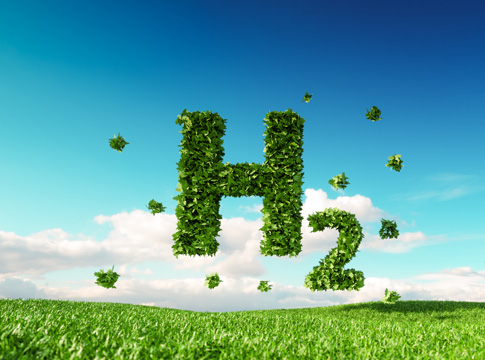Related News
Related News
-
EWEB Hometown Heroes compete internationally
Out of 290 teams from 14 different countries, EWEB's Lineman Rodeo team places in the top third of competitors.
Find Out More -
Vote for your favorite Public Power Week Posters
The top five submittals will receive awards. Help us pick the winners.
Find Out More -
Electric Projects underway in North & South Eugene
Underground lines and disaster-resilient power poles are part of EWEB’s infrastructure upgrade near Eugene’s largest natural resource area.
Find Out More -
The Bonneville Power Administration Rate Change and Your EWEB Bill
BPA’s finalized rate increase is smaller than projected, and EWEB’s pass-through adjustment effective October 1, 2025 will now be 2.7% for residential customers—down from the anticipated 4%.
Find Out More -
EWEB completes helicopter installation of salmon habitat features
EWEB adds downed trees and 2,000 tons of gravel to the Uupper McKenzie River below Tamolitch Falls to improve spawning habitat.
Find Out More -
Court rules in favor of EWEB in Carmen-Smith litigation
The U.S. District Court in Eugene has granted EWEB's motion to dismiss a lawsuit brought under the Endangered Species Act pertaining to fish passage at EWEB’s Trail Bridge Dam. The favorable ruling clears the way for EWEB to continue advancing towards implementation of permanent fish passage at the dam.
Find Out More -
EWEB proposes modified plan for permanent fish passage at Trail Bridge Dam
After eight months of extensive collaboration and analysis with scientific experts at two federal regulatory agencies, EWEB is proposing an improved plan to build permanent fish passage facilities at Trail Bridge Dam on the McKenzie River.
Find Out More -
Sustainability Snapshot - Ideal Steal July 2025
Our second Sustainability Snapshop highlights a project where EWEB helped a local industrial warehouse upgrade over 1,000 flourescent lights to new efficient LEDs.
Find Out More -
EWEB prepares for wildfire season with risk mitigation measures
EWEB is building a more resilient electric system to weather various types of disasters, from wildfire to winter storms.
Find Out More -
Sustainability Snapshot - Homes for Good May 2025
Our first Sustainability Snapshop highlights a project where EWEB teamed up with longtime partner, Homes for Good, to deliver ductless heat pumps to income-eligible apartment rentals.
Find Out More -
EWEB, Lane County host open house to gather feedback for “Leaburg Transportation Alternatives Analysis”
“What is the Future of the Leaburg Dam Bridge?” open house exhibit on display at Lloyd Knox Park Visitor Pavilion through July 25
Find Out More -
Improving habitat resiliency throughout the Upper McKenzie
Environmental Responsibility is a core guiding value for EWEB decision-making. This summer, EWEB continues its commitment to environmental stewardship with a robust slate of habitat enhancement updates throughout the upper McKenzie River, across the footprint of the Carmen-Smith Hydroelectric Project.
Find Out More -
EWEB weighs multi-billion-dollar decision affecting energy supply
EWEB is weighing energy supply decisions that will cost nearly $2 billion over the next two decades.
Find Out More -
EWEB opens applications for 2025 Electric Mobility Community Grant
The Eugene Water & Electric Board is now accepting applications for the 2025 Electric Mobility Grant, reinforcing EWEB's commitment to sustainability and cleaner transportation.
Find Out More -
Walterville Hydroelectric Project to remain offline through 2025
EWEB continues to pursue repair plans but must fulfill additional investigation requirements before resuming operation.
Find Out More - Show More
EWEB Explores Renewable Hydrogen Project
October 08, 2020

A team of Pacific Northwest public and private organizations have signed a memorandum of understanding to explore the development of what would be one of the largest renewable hydrogen production facilities in North America.
The partners in the hydrogen production and carbon-reduction initiative include EWEB, NW Natural and the Bonneville Environmental Foundation.
"We're very excited to be part of this unique and innovative partnership that looks at energy issues holistically and includes organizations across the energy spectrum with complementary interests," said Frank Lawson, general manager at EWEB. "This is a good example of another step we can take to explore and develop sustainable and practical climate solutions for our region."
The hydrogen production facility will demonstrate how renewable and low-carbon electricity can be transformed into "green" hydrogen, through a process called "power-to-gas" and used to decarbonize the region's space heating and transportation sectors. Plans include the potential for a facility in Eugene that could range in size from 2 megawatts up to 10 megawatts.
Power-to-gas produces hydrogen from water by running electricity through a piece of equipment called an "electrolyzer." The device separates water (H2O) into hydrogen and oxygen that are then captured for storage and use. Using electricity sourced from hydro, wind, solar or other low-carbon sources, this process creates a renewable form of hydrogen ("green" hydrogen.)
Today, most hydrogen for industrial uses is made using fossil fuels through the steam reformation process. This project will instead look to renewable zero-emissions production sources.
Green hydrogen will be critical to the long-term decarbonization of the world's energy systems, including transportation, heating, manufacturing and other processes. It's the most versatile energy source available. The team also recognizes these opportunities in other sectors, like buses using fuel-cells, and are looking for additional partners to work with on the potential development.
Hydrogen can be blended with natural gas in small amounts (less than 10%) for delivery and used in existing appliances and equipment. It can also be combined with carbon dioxide to make a form of renewable natural gas through a process called methanation that can then be stored or delivered along with or in place of conventional natural gas supplies.
"By combining new technologies with renewables developed for the pipeline network and lower use through energy efficiency, we see no technical barrier to a carbon-neutral natural gas system. It's a strategy already emerging in Europe, and it's our vision forward," said David Anderson, NW Natural president and CEO.
The group will look to recreate existing models of successful power-to-gas installations, which can be found in Europe, South Korea and elsewhere. It will also explore the utilization of some of the hydrogen directly in fuel cells for backup electricity generation.
"In addition to helping the region reach its carbon-reduction goals with this project, fuel cell technology would allow us to keep our backup systems operating for several weeks, well beyond the range of diesel generators in the event of a regional emergency that affected the electric grid," EWEB's Lawson said. "These fuel cells can be used to both 'black start' power plants following a major disruption and provide stability for local power grids."
With the growth of wind and solar generation, on top of existing hydroelectric generation, there is periodically an abundance of renewable electricity available in the Pacific Northwest throughout the year. By converting some of this excess electricity into hydrogen through the power-to-gas method, utilities can store the hydrogen for months or even years.
"Now that wind and solar are the cheapest sources of new electricity, renewably produced hydrogen can couple a clean electricity system to other hard-to-decarbonize sectors such as transportation, fertilizer production, and steel refining," said Evan Ramsey, senior director of the Renewable Energy Group at Bonneville Environmental Foundation.

